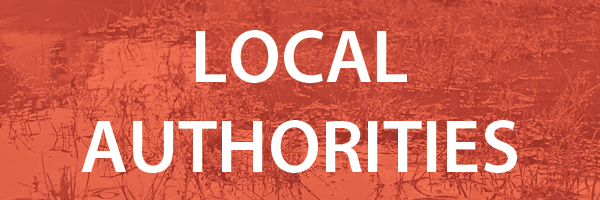Porthcawl Sandy Bay Coastal Scheme (2024)
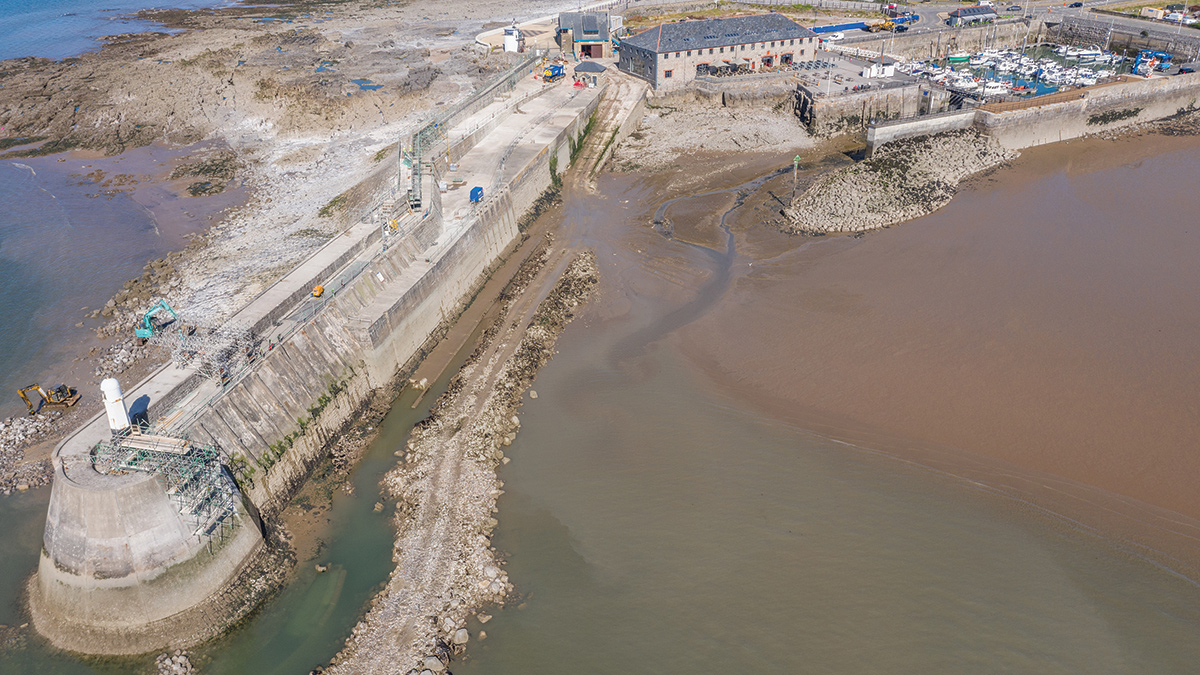
Drone footage of the Western Breakwater construction works - Courtesy of Knights Brown
Porthcawl in South Wales boasts a rich maritime heritage and attracts over a million visitors a year. The seaside location is a draw for visitors and residents, but rising sea levels and increasing storm intensity coupled with ageing infrastructure, have increased the town’s risk of coastal flooding. As well as threatening properties, this has constrained development opportunities in the area. This project reduces threat of coastal flood and erosion risk to around 700 properties, while supporting tourism and providing greater opportunities for amenity and regeneration. Works include a complex renovation of the Grade II listed Western Breakwater, enhancement of the Eastern Promenade, and protection improvements at Rhych Point and relict dunes.
Building a business case for investment
Bridgend County Borough Council (BCBC) commissioned Arup to develop a business case for investment to reduce coastal flood risk to Sandy Bay, a wide and popular beach in Porthcawl. Analysis revealed that the condition of Porthcawl’s historic Western Breakwater was key to managing coastal risk throughout the bay. As a result, it was agreed with Welsh Government, to include the structure in the project.
The bay is surrounded by more than 100 acres of land identified for regionally significant regeneration. A phased approach was developed so works within the council’s control could be funded without the delay and risk of awaiting future development.
As part of the evidence for the business case, flood inundation modelling, informed by asset condition assessments and wave modelling, showed that 110 homes and 70 businesses were at risk of flooding. However, if the Western Breakwater were to fail, this increased to more than 530 homes and 175 businesses.
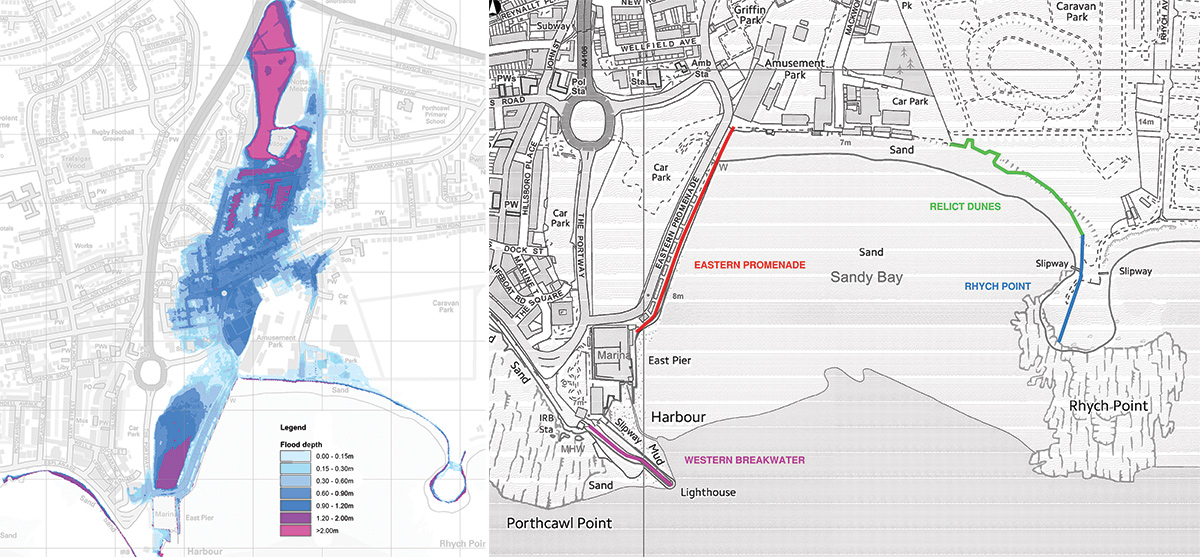
(left) Flood inundation modelling and (right) site location plan – Courtesy of Arup
Innovative investigations & restoration of a historic breakwater
Porthcawl’s 182m-long Western Breakwater is 200 years old and Grade II heritage listed. It forms a crucial part of the coastal infrastructure that protects the harbour and Sandy Bay from extreme wave impacts, but a challenging programme of repairs and strengthening measures was needed to maintain its structural integrity.
To protect its legacy, Arup consulted closely with Cadw, the Welsh Government’s historic environment service, as well as BCBC’s heritage specialists, enabling consents to be obtained without programme delay.
The challenge with the Western Breakwater was understanding the existing structural form (as the breakwater had undergone numerous modifications over its lifetime) and the likely failure scenarios associated with that structure. It was essential for the team to uncover its chronological development since its construction in the 1820s and to identify the nature and extent of its defects.
Arup combined historical research with drone, lidar, geophysical and geotechnical survey data to understand its structural weaknesses. Surveys used non-destructive techniques such as ground-penetrating radar, supplemented by trial pits and horizontal cores. Using the information gathered, the team devised a plan to help maintain the breakwater’s original character while reducing flood risk and improving its structural integrity.
The design included repairs to masonry and concrete, raising parapets, installation of a precast concrete cut-off wall and new rock armour. The design thus reduced the risk of voids and the impact of waves. Stone was sourced from the local quarry used in the original construction to replace a failed seaward sloping wall, and the voids were grouted to prevent water leakage and corrosion. A cut-off wall was constructed to provide a protective layer to reduce scour risk and future washout of fine material.
To strengthen the slender parapets without damaging the heritage-listed historic masonry, Cintec reinforcing anchors were added. This is a system that uses grout contained in a fabric sock mesh, combined with steel anchors. It helped to preserve the breakwater’s original character, as well as minimising carbon impacts and overall project costs.
By repairing the existing breakwater, rather than building a new one, the project reduced embodied carbon, and using locally quarried materials reduced transport impacts. The choice of prefabricated mass concrete blocks instead of reinforced concrete for the cutoff wall reduces future maintenance needs for the Western Breakwater. During construction it also reduced the health and safety risks of deep-water working, as the blocks acted as permanent shuttering.
Early engagement with Knights Brown contractors providing early supplier engagement was key; it ensured that the team’s designs could be safely implemented during periods of low tide and in challenging coastal working conditions.
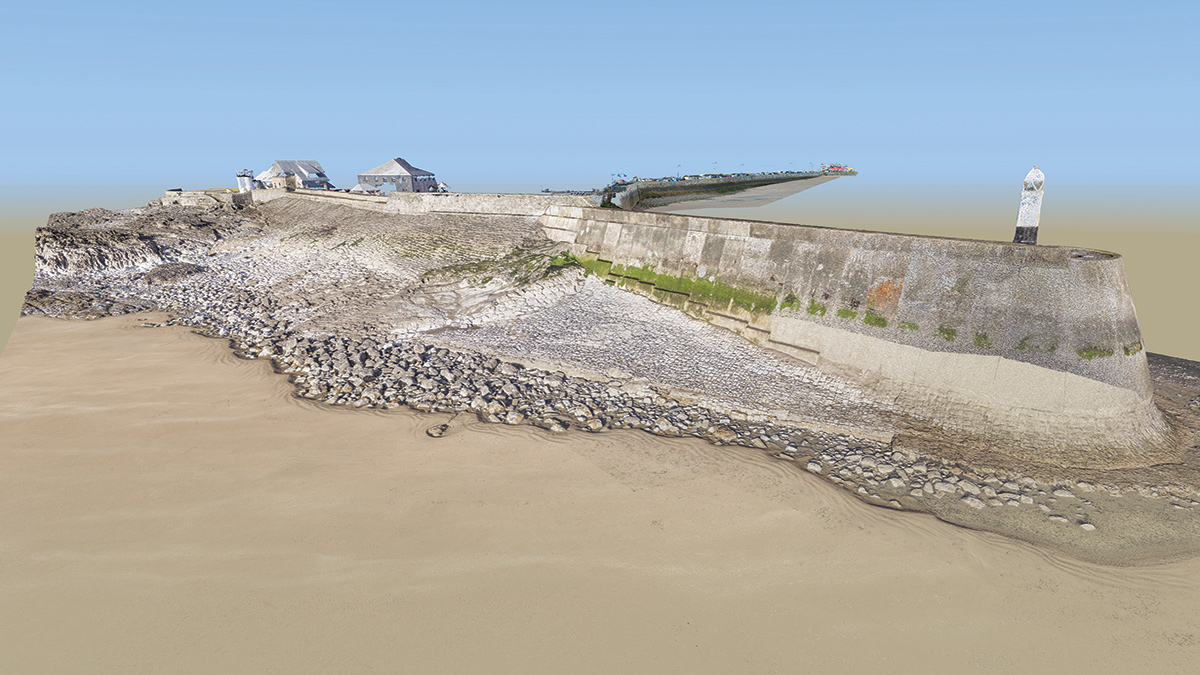
Western Breakwater Point Cloud model – Courtesy of Arup
Placemaking public realm enhancements
As well as repairing and improving the listed breakwater, the project extended to the Eastern Promenade, located on the west side of the popular Sandy Bay beach. Initially, a secondary wall to stop waves overtopping the promenade was planned, but Arup’s placemaking design sought to ensure the promenade would be attractive for visitors and residents in years to come, and overtopping studies showed that the wall could be replaced with multifunctional planters. This added more green space, integrated terraced seating and minimised service diversions and disruption to the public.
The team also improved cycling and walking routes, ensuring the promenade was more functional and appealing for visitors and locals.
Preserving the dunes
Where previous proposals would have seen the sand dune habitat protected by concrete terraced defences, ABPmer’s study for Arup into coastal processes showed that the dunes could be preserved and restored using nature-based solutions, minimising costs and carbon emissions. For the restoration of the dunes to create a natural buffer, the team proposed 285m of low-level fencing to encourage the build-up of new dunes. These simple measures, combined with a growth and stability monitoring plan, will help maintain the coastal pathway. This approach has enhanced coastal resilience and revitalised the beach ecosystem, benefiting both residents and tourists.
Supporting marine biodiversity
To help support marine biodiversity, the team worked with CubeX Industries Ltd/BlueCube Marine and Swansea University to test innovative modular textured panels used to form an artificial reef and rock pools.
The hexagonal panels featured 13 distinct patterns made from ultra-high-performance concrete, with three different concrete mixes tested, including one incorporating local crushed cockle shells and ash. These were affixed in a beehive arrangement on the horizontal toe of the breakwater, to evaluate pattern colonisation by fauna and seaweeds under varying submergence times and wave exposures. The panels aimed to mimic natural habitats and foster marine life such as the protected honeycomb worm.
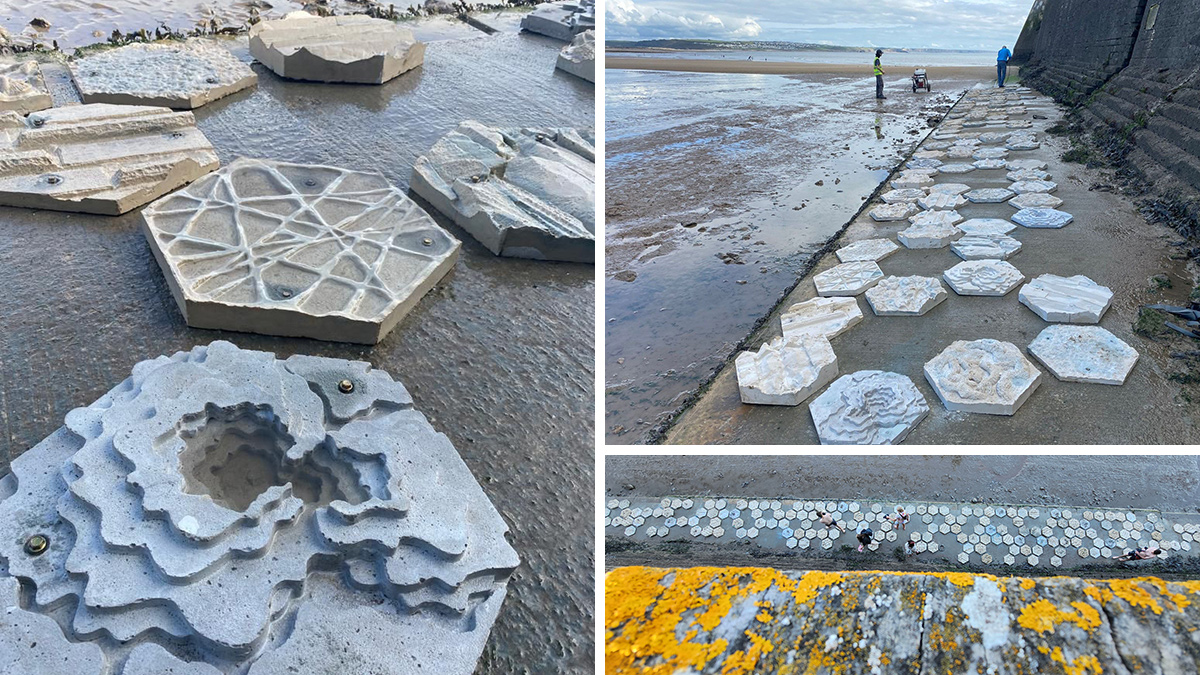
Settlers of Porthcawl – Courtesy of BlueCube Marine
The project, known locally as the Settlers of Porthcawl, gained community support for eco-engineering interventions. Through questionnaires, the team established the public’s preferences for patterns imitating natural textures, and for a mixture of designs on the seawall. The project gained popularity among local schools and hosted over 200 students to teach them about climate change, biodiversity and sea-level rise.
Monitoring for a year revealed colonisation disparities across the sites due to wave exposure. This emphasised the significance of submergence and exposure. It was found that the most successful patterns to help foster colonisation were those with protruding ledges and rough microstructures, as opposed to smooth designs.
Project details
- Programme overview: Welsh Government
- Client: Bridgend County Borough Council
- Project cost: £6m
- Design start: October 2016
- Construction period: April 2021 – June 2023
Porthcawl Coastal Scheme: Supply chain – key participants
- Designer: Arup
- Construction supervisor: WSP
- Marine specialist: ABPmer
- Geophysical survey specialists: TerraDat (UK) Ltd
- Land surveys: Azimuth Land Surveys
- Archaeology: Glamorgan-Gwent Archaeological Trust
- Surveys: Tetra Tech
- Maritime structural engineering sub-consultant: Steve Hold Consulting
- Main contractor: Knights Brown
- Groundworks: McCarthy Contractors Bridgend Ltd
- Concrete repairs & grout: Beton Bauen Ltd
- Scaffolding: PSS Scaffolding Ltd
- Fabrication: Total Fabrication
- Precast: Macrete (Ireland) Ltd
- Green infrastructure pilot: Swansea University
- Architectural concrete: CubeX Industries Ltd
- Artificial reef & rockpools: BlueCube Marine
- Handrailing: Broxap Ltd
- Cintec anchors: Celtest Company Ltd
- Masonry: Dawson Stone Masonry Ltd
- Surfacing: Asphalt Surfacing Ltd
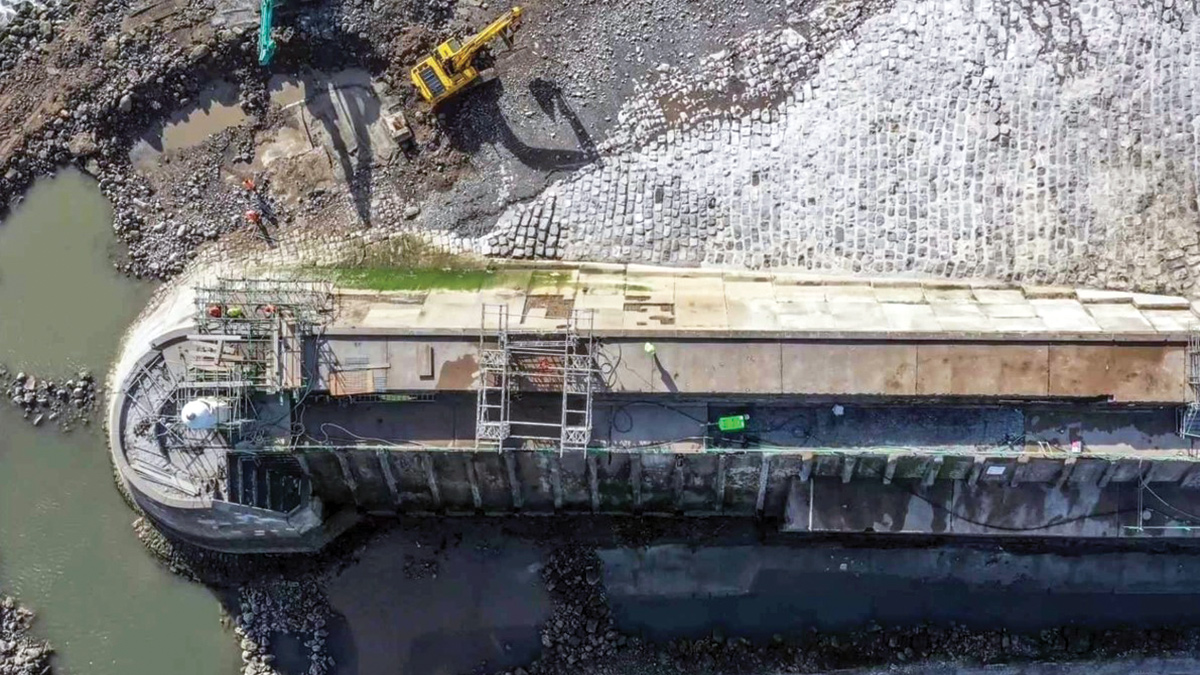
Western Breakwater construction works – Courtesy of Knights Brown
Challenging, collaborative construction
Knights Brown was appointed principal contractor under a NEC3 Engineering and Construction Option A contract, reflecting a commitment to cost acuity and risk mitigation.
In the high-risk environment, reducing construction risks meant minimising drilling, concreting and grout injection times to suit three-hour tide windows. Design and construction teams worked collaboratively on site, for example to minimize grout loss due to residual post-survey uncertainty around structural void volumes and locations. Cradle solutions extended working times. Precast standardised mass concrete blocks and redesigned Cintec anchor applications all supported installation.
Extensive consultation with users of the infrastructure and development of a phasing plan (including measures such as avoiding construction at Rhych Point during peak tourist season and phasing construction to retain public access to Eastern Promenade) was crucial to mitigate negative impacts during construction. This enabled community and sporting groups to access the promenade and maintained RNLI lifeboat access to the slipway. Project information boards and use of local media raised awareness of the scheme and kept users informed of progress.
Community benefits emphasised local employment and training opportunities, including five new-entry apprenticeships, engagement with local supply chain and support of local initiatives for young people not in education, employment or training. A bespoke schools engagement programme based on ‘The Tale of the Sea Monster’ educated and raised awareness of the need for improvements in a child-friendly, engaging way.
Construction was hit by several large and powerful storms; evidenced by modelling to be impacted by climate change. In response to damage from a May 2021 storm, repairs employed hydro-demolition of concrete around reinforcement bars, repairing the corroded bars and spraying concrete to repair panels. The resilience of these repairs was proven in December 2021 when Storm Barra halted construction work but caused no damage to repairs.
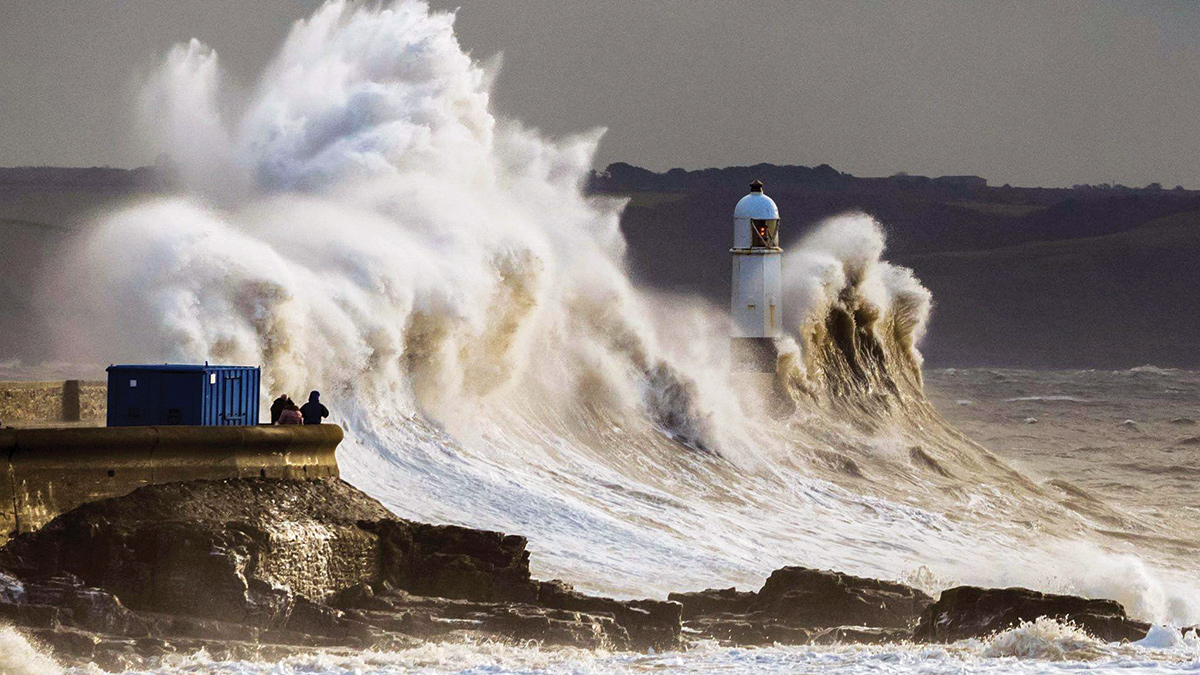
Western Breakwater during Storm Diana – Courtesy of Keith Jones
Conclusion
Despite the impact of the COVID-19 pandemic, as well as multiple severe storms, the Porthcawl Sandy Bay Coastal Scheme was completed in the agreed time-frame and within budget in Summer 2023.
Beyond its primary objective of reducing flood risk, the scheme has delivered substantial economic benefits to the local community and the wider region. By safeguarding critical infrastructure, residential properties and commercial assets, the scheme protects livelihoods and preserves the vitality of the coastal economy. Moreover, the enhanced recreational opportunities and improved coastal aesthetics will attract tourists and investors, stimulating economic growth and enhancing the town’s resilience to future shocks.
Janine Nightingale, Director of Communities, Bridgend County Borough Council commented:
“… [the scheme] forms a vital part of the infrastructure for defending the town against flooding and will also help to secure future development in the area.”
The scheme was highly commended for the Environmental Project of the Year and shortlisted for the National Infrastructure Commission’s Design Principles Project of the Year at the British Construction Industry Awards 2023.
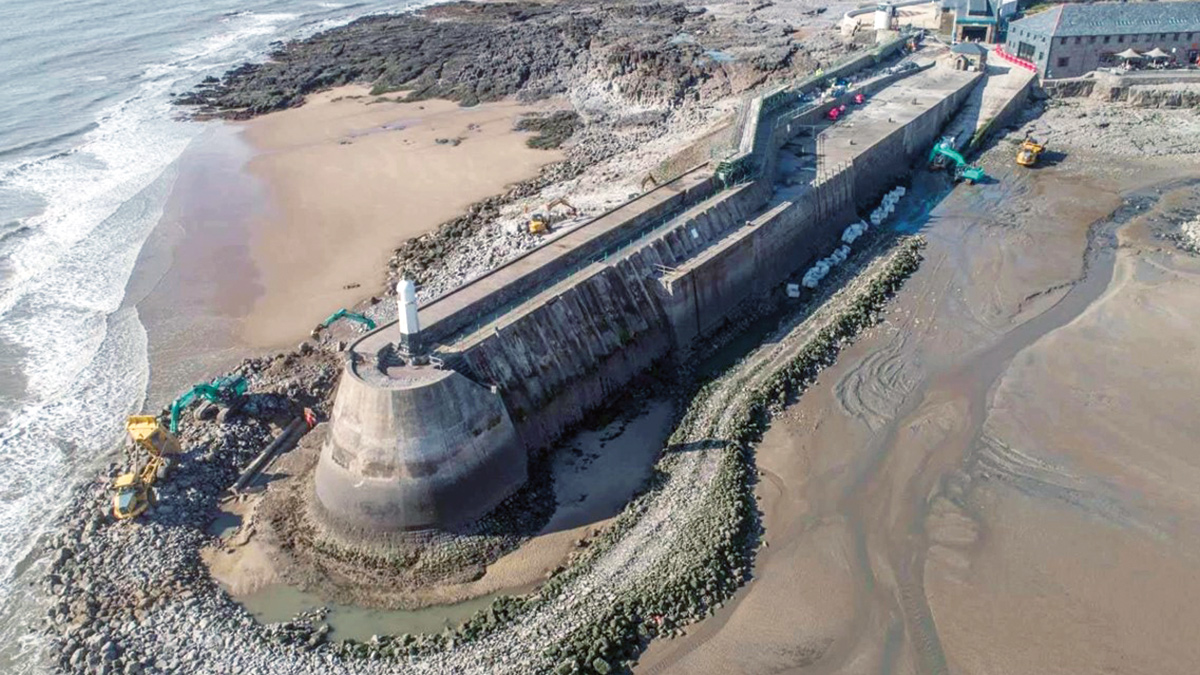
Western breakwater drone image of construction works - Courtesy of Knights Brown
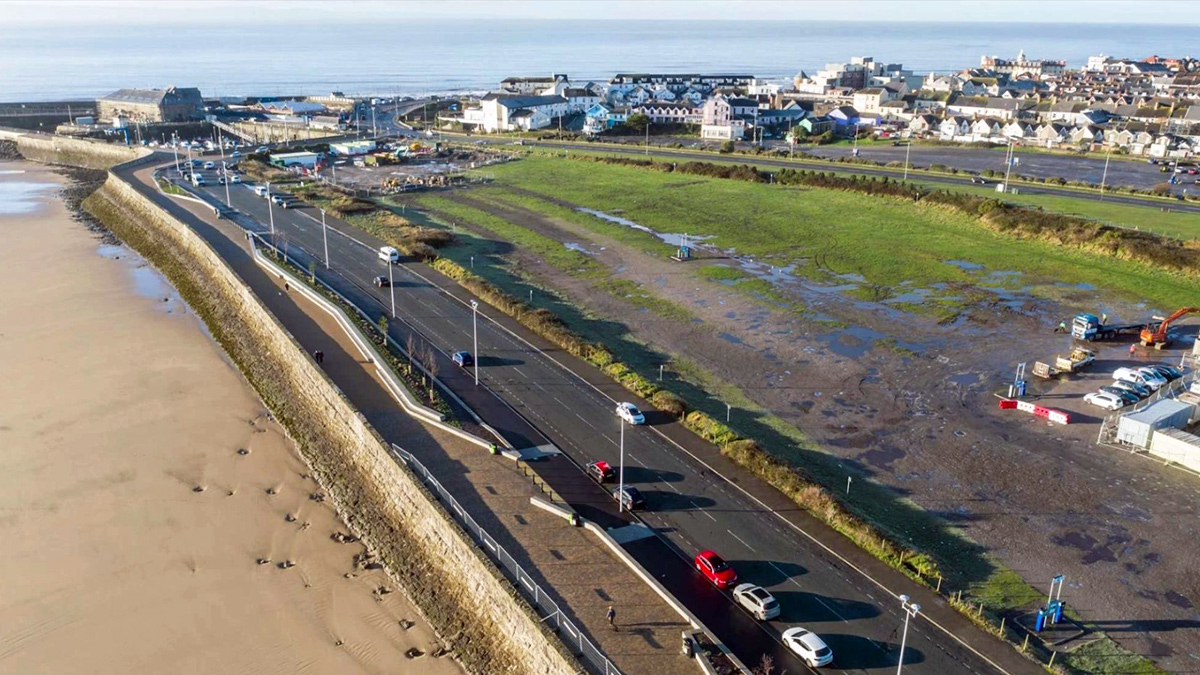
Porthcawl eastern promenade - Courtesy of Knights Brown


